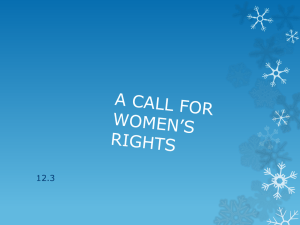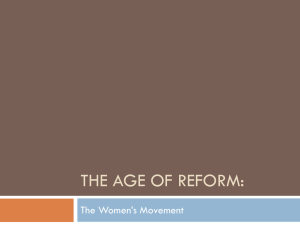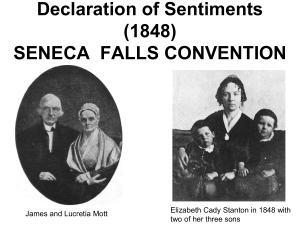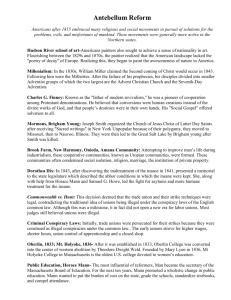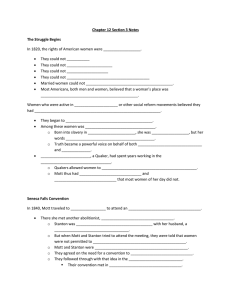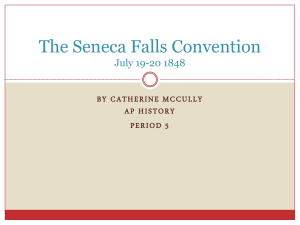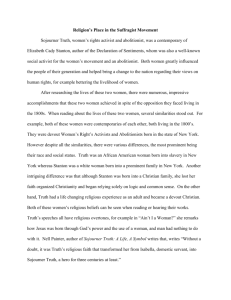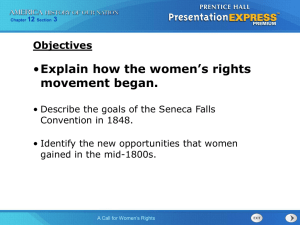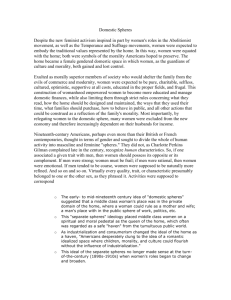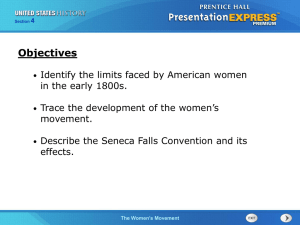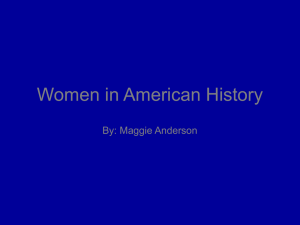The Women*s Movement - cartervilleushistory
advertisement
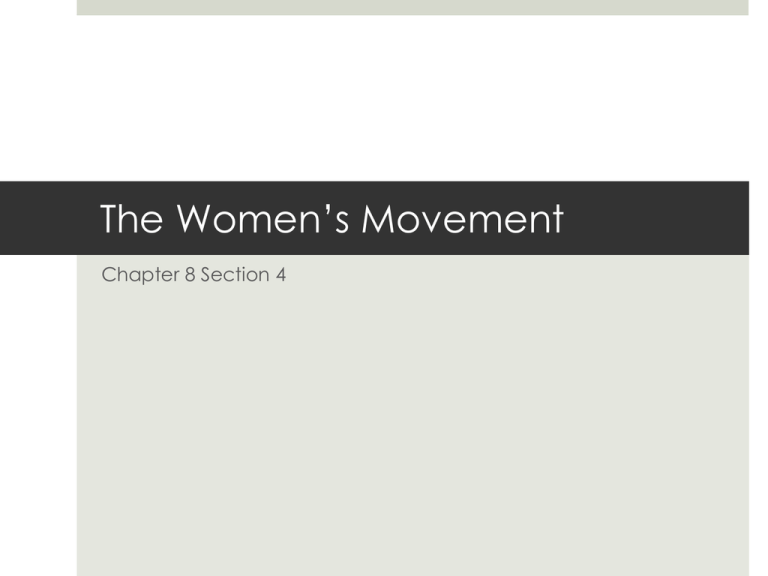
The Women’s Movement Chapter 8 Section 4 Women Work for a Change Women’s rights limited Private influence Lack of basic legal and economic rights Could not hold property, hold office, or vote, forbidden to speak in public No formal education Divorce: husband gained custody of children Certain cultures women held a great deal of power (matrilineal) Reform Efforts Reform of American society driven by 2nd Great Awakening Catharine Beecher, Emma Willard, Elizabeth Blackwell, Ann Preston public school movement Dorothea Dix treatment of prisoners, treatment of mentally ill Angelina and Sarah Grimké Abolitionists Sojourner Truth former slave from NY Powerful speeches and arguments Sojourner Truth Women enter the Workplace Industrialization allow women to get out of home Economic independence Social independence 1830, women’s labor unions form Political and Economic Status of Women in early 1800s Women could not vote Women could not hold public office Women could not serve on juries Few women received any level of higher education Women could not work in most trades or professions When they did work, women were paid less than men doing the same jobs, and their fathers or husbands often took what money they did earn Married women lost legal control of any money or property they owned before marriage to their husbands Married women could not testify against their husbands in court, sue for divorce, or gain custody of their children Women Fight for Rights Virtually no progress for women’s rights Middle class women hire poor women to do housework Think about the society in which children are raised Women began to see their own social restrictions comparable to slavery Lack of power held by slave = lack of power held by women Women’s Movement A movement working for greater rights and opportunities for women Grimkés argue that God made men and women equal Moral grounds to defend slaves and women Disagreement Full equality small minority of women Debate over whether women should be allowed to join men’s business meetings (abolition) Lucretia Mott and Elizabeth Cady Stanton believed women should be allowed to join Mott and Stanton active reformers Temperance and abolition Mott American Antislavery Society and Philadelphia Female Anti-Slavery Society Stanton married to Henry Stanton (leading abolitionist) both interest in women’s rights Seneca Falls Seneca Falls Convention Mott and Stanton organize 1st Women’s Rights Convention in NY “Declaration of Sentiments” Marked beginning of women’s movement Amelia Bloomer Leading voice for women’s rights The Lily Susan B. Anthony Right to vote (suffrage) Women Gain Rights Married Women’s Property Act Guaranteeing many property rights to women Wage earners Reformers Property rights Right to vote
